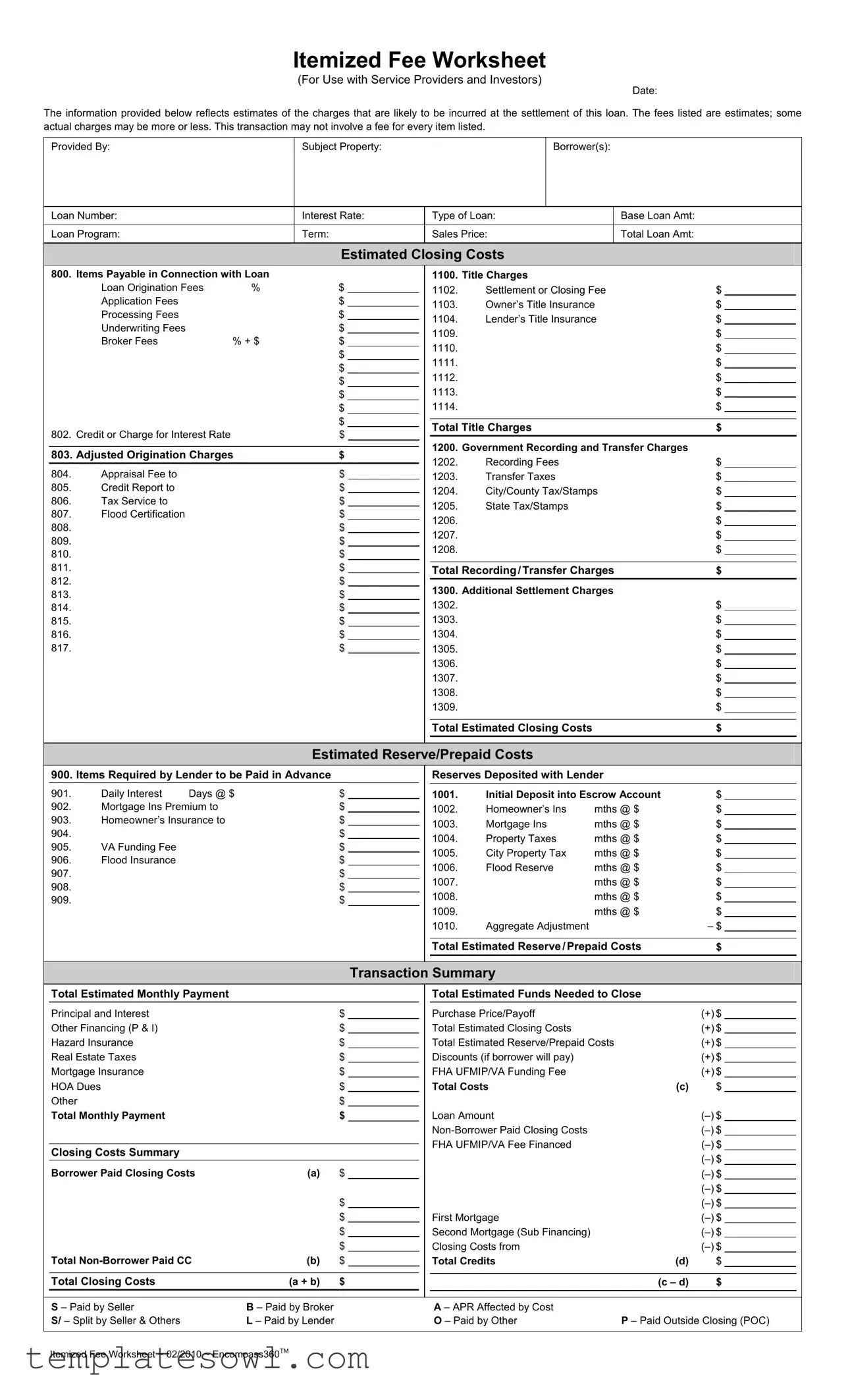What is the purpose of the Fee Worksheet form?
The Fee Worksheet serves as a detailed breakdown of estimated costs associated with a loan settlement. It specifies charges that borrowers might incur and provides a transparent way to understand potential fees. By itemizing these charges, borrowers can better prepare for the financial aspects of their transaction, helping them to create a budget and anticipate necessary funds needed at closing. This clarity assists in making informed decisions throughout the loan process.
How can I use the Fee Worksheet to estimate my closing costs?
To use the Fee Worksheet effectively, start by filling in the relevant details about your loan, such as the loan number, interest rate, and property information. Next, take a closer look at each section of the worksheet. It includes line items for various charges like title fees, appraisal fees, and other settlement costs. Add up the estimates for each category to see a summary of your total closing costs. This can help both you and your lender to assess the expected expenses and manage your finances accordingly.
Can the estimates provided in the Fee Worksheet change?
Yes, the estimates on the Fee Worksheet are subject to change. They reflect initial estimates based on typical charges, but the actual fees at closing may vary. Some costs might be higher, while others could be lower. It’s important to communicate with your lender throughout the process to receive updates on any changes to your estimated costs. Keeping in touch ensures you are not caught off guard and can plan your finances accordingly.
What information do I need to gather before completing the Fee Worksheet?
Before completing the Fee Worksheet, it’s helpful to gather specific information about your loan and property. This includes the loan number, total loan amount, interest rate, and type of loan. Additionally, information on anticipated charges, such as loan origination fees, appraisal fees, and other service provider costs, will be necessary. Having this data ready will streamline the completion of the worksheet and enhance the accuracy of your estimated closing costs.
